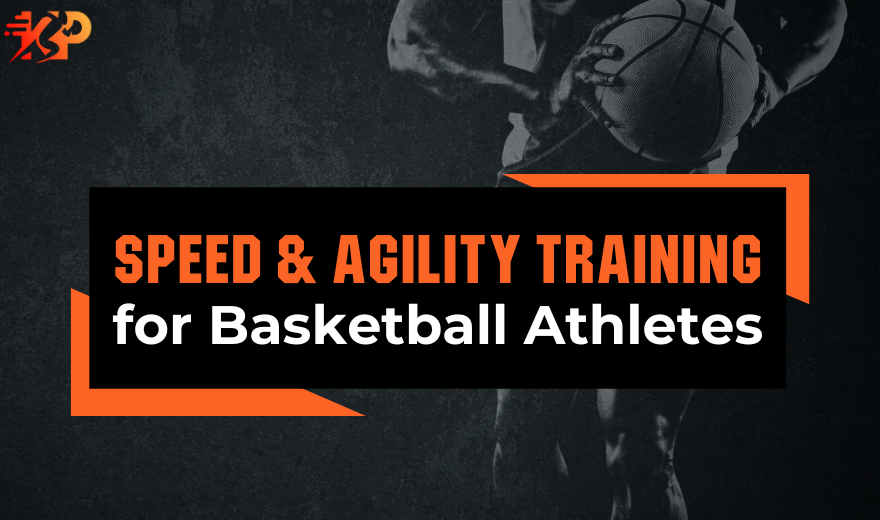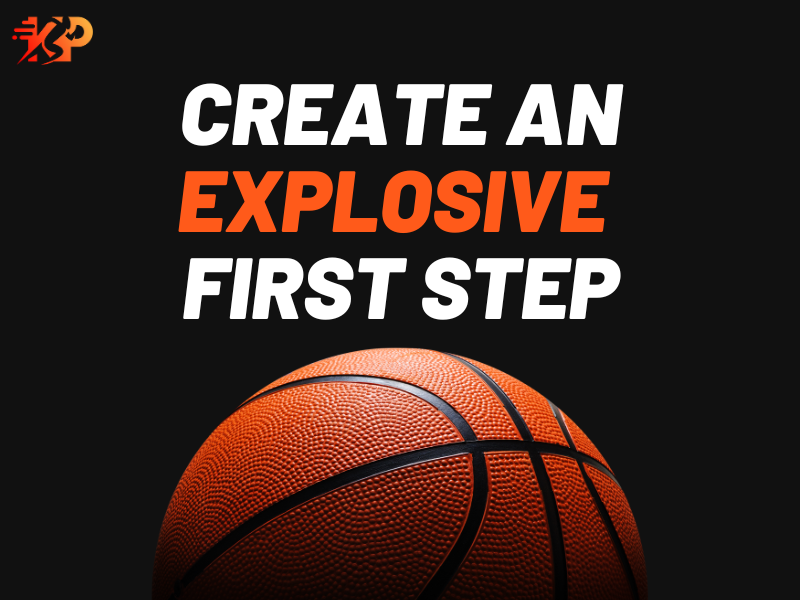Speed and Agility Training for Basketball Athletes
By Mark Keil, CSCS
Posted on August 7, 2024

Speed and Agility are critical attributes that can significantly enhance an athlete’s performance in basketball.
These physical capabilities allow players to move swiftly and efficiently, execute quick changes in direction, and maintain control of their bodies in various game situations.
An Overview of Speed in Basketball
Offensive Play
Speed allows players to outpace their defenders and create scoring opportunities. A fast player can exploit gaps in the defense, drive to the basket, and execute quick cuts to receive passes.
Speed is crucial for guards, who often handle the ball and initiate plays. A speedy guard can push the ball up the court quickly in transition, putting pressure on the defense and creating fast-break opportunities. Speed also helps execute pick-and-roll plays, where the ball handler must navigate screens and quickly make split-second decisions.
Defensive Play
Speed is equally important for Defensive Play. A fast defender can stay in front of their opponent, contest shots, and recover quickly if beaten off the dribble.
Speed allows for effective closeouts on shooters, reducing the likelihood of open shots. Additionally, quick players can jump passing lanes and intercept or deflect passes, leading to turnovers and fast-break opportunities for their team.
Transition Game
Speed is a game-changer in transition. A fast player can turn a defensive rebound into a fast-break opportunity in seconds, placing immense pressure on the opposing defense. Speed in transition helps in scoring and creating mismatches, as slower defenders struggle to keep up.
Agility in Basketball
Offensive Play
Agility is the athlete’s ability to change direction quickly and efficiently. Agile players can perform crossovers, spin moves, and other dribbling maneuvers to evade defenders, which is crucial for creating space and driving to the basket. Agility also aids in executing precise cuts, allowing players to get open for passes or shots.
Post players also benefit from agility, using quick footwork to establish position and make moves.
Defensive Play
On defense, an agile defender can mirror their opponent’s movements, making it difficult for them to drive past. Agility is crucial for staying balanced and maintaining a defensive stance while reacting to the offensive player’s moves. Agility also plays a role in shot-blocking, allowing players to react quickly and leap to contest shots without fouling.
Rebounding
Both speed and agility contribute to effective rebounding. Speed allows players to quickly move into position, while agility helps them maneuver around opponents to secure the ball. An agile player can adjust their body position mid-air to grab the rebound, which is especially important in crowded situations under the basket.
Combined Impact on Performance
A fast and agile player can be a nightmare for defenders. They can blow past slower defenders and outmaneuver those who might be quick but lack agility. This combination forces defenses to make adjustments, often leading to double teams and rotations that can create open opportunities for teammates.
Enhancing Team Dynamics
When multiple players on a team possess speed and agility, the overall dynamics of the team improve. The team can execute fast-paced offensive schemes, such as fast breaks and quick ball movement, making it difficult for defenses to keep up. On defense, a team with speed and agility can apply pressure, force turnovers, and quickly transition to offense. This high-energy style of play can demoralize opponents and shift the momentum in favor of the faster, more agile team.
Injury Reduction
Speed and agility training can also help reduce injuries. Improving an athlete’s ability to control their movements and maintain balance decreases the likelihood of awkward landings and collisions. Proper agility training focuses on strengthening the muscles and improving coordination, which can help prevent common basketball injuries such as ankle sprains and knee injuries.
Training for Speed and Agility
Plyometrics
Plyometric exercises, such as jump squats, max verticals, box jumps, and lateral bounds, develop explosive speed and agility. These exercises enhance the power and efficiency of muscle contractions, leading to quicker movements and better overall athletic performance.
Ladder Drills
Ladder drills improve foot speed, coordination, and agility. By practicing various patterns, such as high knees, lateral shuffles, and in-and-out steps, players can enhance their ability to change direction quickly and efficiently.
Resistance Training
Strength training, particularly in the lower body, is crucial for speed and agility. Exercises like squats, deadlifts, and lunges build muscle strength to support quick, powerful movements.
Incorporating resistance bands into workouts can also improve explosive power and acceleration.
Agility Drills
Agility drills, such as the T-Drill, Y-Drill, and the Pro Agility Drill, improve the athlete’s ability to change direction quickly. Agility Drills help athlete’s develop the ability to react swiftly and efficiently to different scenarios.
Flexibility and Mobility
Maintaining flexibility and mobility is essential for maximizing speed and agility. Regular stretching and dynamic warm-ups can enhance joint range of motion, allowing smoother and more efficient movements.
Conclusion
In summary, speed and agility are fundamental to excelling in basketball. These attributes enhance a player’s ability to perform offensively and defensively, creating opportunities that can shift the outcome of a game. Players can develop and maximize their speed and agility by incorporating targeted training methods that will help them improve their basketball performance.
Every week I train athletes across multiple sports on how to improve their speed and agility. I’ve worked with D1 Basketball Teams and can show your athlete how to improve their on-court speed and quickness. Interested in trying the program for free? Click here.
Training Resources



